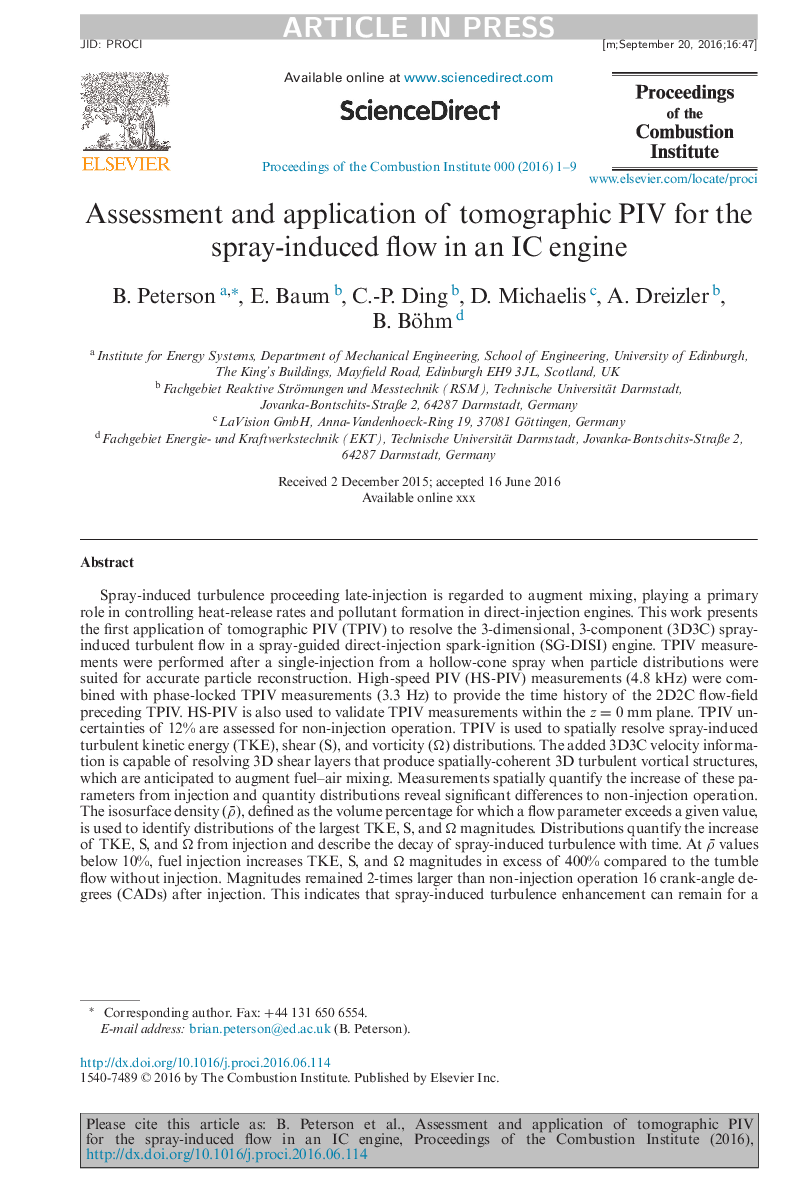| Article ID | Journal | Published Year | Pages | File Type |
|---|---|---|---|---|
| 4915400 | Proceedings of the Combustion Institute | 2017 | 9 Pages |
Abstract
Spray-induced turbulence proceeding late-injection is regarded to augment mixing, playing a primary role in controlling heat-release rates and pollutant formation in direct-injection engines. This work presents the first application of tomographic PIV (TPIV) to resolve the 3-dimensional, 3-component (3D3C) spray-induced turbulent flow in a spray-guided direct-injection spark-ignition (SG-DISI) engine. TPIV measurements were performed after a single-injection from a hollow-cone spray when particle distributions were suited for accurate particle reconstruction. High-speed PIV (HS-PIV) measurements (4.8 kHz) were combined with phase-locked TPIV measurements (3.3 Hz) to provide the time history of the 2D2C flow-field preceding TPIV. HS-PIV is also used to validate TPIV measurements within the z = 0 mm plane. TPIV uncertainties of 12% are assessed for non-injection operation. TPIV is used to spatially resolve spray-induced turbulent kinetic energy (TKE), shear (S), and vorticity (Ω) distributions. The added 3D3C velocity information is capable of resolving 3D shear layers that produce spatially-coherent 3D turbulent vortical structures, which are anticipated to augment fuel-air mixing. Measurements spatially quantify the increase of these parameters from injection and quantity distributions reveal significant differences to non-injection operation. The isosurface density (ϯ), defined as the volume percentage for which a flow parameter exceeds a given value, is used to identify distributions of the largest TKE, S, and Ω magnitudes. Distributions quantify the increase of TKE, S, and Ω from injection and describe the decay of spray-induced turbulence with time. At ϯ values below 10%, fuel injection increases TKE, S, and Ω magnitudes in excess of 400% compared to the tumble flow without injection. Magnitudes remained 2-times larger than non-injection operation 16 crank-angle degrees (CADs) after injection. This indicates that spray-induced turbulence enhancement can remain for a significant time after injection. Measurements and analyses provide insight into spray-induced turbulence phenomena and are anticipated to support predictive model development for engine sprays.
Keywords
Related Topics
Physical Sciences and Engineering
Chemical Engineering
Chemical Engineering (General)
Authors
B. Peterson, E. Baum, Ding C.-P., D. Michaelis, A. Dreizler, B. Böhm,
